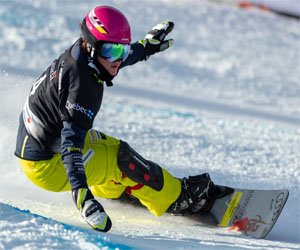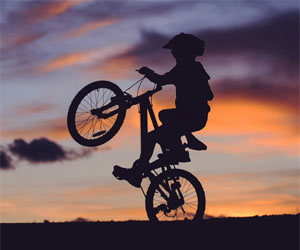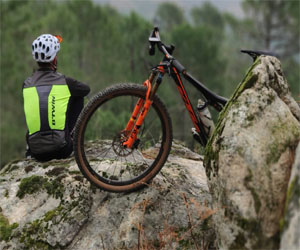


Embrace The Snowy Slopes

If you're ready to embark on an exciting winter adventure and experience the thrill of gliding down pristine slopes surrounded by snow-capped mountains, skiing and snowboarding are fantastic choices. These winter sports offer a unique combination of exhilaration and tranquility, making them perfect for beginners seeking a taste of the mountains' beauty and adrenaline. To help you get started, here's a comprehensive beginner's guide to skiing and snowboarding.
The Basics Of Skiing And Snowboarding: Before you hit the slopes, it's essential to understand the fundamental differences between skiing and snowboarding. Skiing involves using two separate skis on your feet, while snowboarding employs a single snowboard. Skiing is typically easier to learn for beginners as it allows for better balance, while snowboarding requires a bit more coordination but offers a unique sense of control and style.
Choosing The Right Gear: Selecting the right equipment is crucial to your success on the slopes. Make sure to invest in well-fitted boots, skis or a snowboard, and appropriate clothing to keep you warm and dry. Rental equipment is a cost-effective option for beginners, allowing you to test the sport before committing to your own gear.
Lessons And Instruction: Enrolling in lessons with a certified instructor is a wise choice for beginners. Ski schools and snowboarding instructors can provide you with proper guidance, teach you the essential techniques, and ensure your safety. They will help you learn how to balance, turn, and stop effectively, reducing the risk of injuries.
Understanding Terrain: Ski resorts offer various terrains, including green (beginner), blue (intermediate), and black (advanced) slopes. Start on the green slopes to practice your skills and build confidence. Progress to more challenging terrain as you become more proficient. Always pay attention to trail signs and ski within your comfort zone.
Safety First: Safety should be your top priority. Wear a helmet to protect your head and always follow the mountain's safety guidelines. Learn how to fall safely to minimize the risk of injury, and be mindful of other skiers and snowboarders on the slopes. Proper etiquette and courtesy go a long way.
Practice And Patience: Skiing and snowboarding are sports that require practice and patience. Don't get discouraged if you don't master them on your first day. Continue to practice, take lessons, and gradually increase the level of difficulty as you improve. Snow sports can be physically demanding, so be sure to maintain your fitness and stamina.
Enjoy The Scenic Beauty: One of the most enchanting aspects of skiing and snowboarding is the breathtaking scenery. Take time to appreciate the snow-covered mountains, pristine slopes, and the crisp mountain air. These winter sports provide a unique opportunity to connect with nature while enjoying a thrilling adventure.
As you begin your journey into the world of skiing and snowboarding, remember that it's a sport that combines physical activity with a profound appreciation for the winter wonderland. With the right gear, proper instruction, and a positive attitude, you can embrace the snowy slopes and create unforgettable memories. The beginner's guide to skiing and snowboarding will set you on the path to mastering these exciting winter sports and enjoying the mountain's beauty with grace and style. So, gear up and get ready for an incredible adventure on the slopes!
A Thrilling Adventure
 One of the most captivating aspects of conquering trails and terrain on a mountain bike is the ever-changing landscape. Riders can transition from gentle dirt paths to rocky, technical descents, and back again in a matter of minutes. This dynamic experience keeps the adrenaline pumping and the senses heightened, making each ride a unique adventure.
One of the most captivating aspects of conquering trails and terrain on a mountain bike is the ever-changing landscape. Riders can transition from gentle dirt paths to rocky, technical descents, and back again in a matter of minutes. This dynamic experience keeps the adrenaline pumping and the senses heightened, making each ride a unique adventure.
The versatility of mountain biking means that riders can choose trails that match their skill level. Beginners can start with smoother, more straightforward paths, while experienced riders seek out challenging routes with steep inclines, sharp turns, and obstacles to navigate. It's a sport that offers progression, so as riders become more skilled, they can tackle increasingly demanding terrain.
Conquering trails and terrain on a mountain bike is not just about the physical aspect; it's a mental challenge as well. Riders must make quick decisions, read the trail ahead, and adapt to changing conditions. It's a test of focus, determination, and problem-solving skills.
Safety is paramount when exploring these trails, and riders should wear appropriate protective gear, including a helmet, gloves, and body armor.


Embracing Nature's Hidden Beauty
 The Appeal Of Untouched Landscapes: Untouched landscapes beckon explorers and nature enthusiasts with promises of solitude, serenity, and unparalleled beauty. These are the places where nature's true character reveals itself, unaltered by human intervention. The appeal lies in the raw, unspoiled beauty that stirs the soul and offers a rare opportunity to witness the world as it was meant to be.
The Appeal Of Untouched Landscapes: Untouched landscapes beckon explorers and nature enthusiasts with promises of solitude, serenity, and unparalleled beauty. These are the places where nature's true character reveals itself, unaltered by human intervention. The appeal lies in the raw, unspoiled beauty that stirs the soul and offers a rare opportunity to witness the world as it was meant to be.
Exploration And Adventure: Discovering untouched landscapes often involves exploration and adventure. These areas are typically off the beaten path and may require more effort to reach. Whether it's hiking through dense forests, kayaking down remote rivers, or trekking through rugged terrain, adventurers are rewarded with the thrill of uncovering nature's hidden gems.
Preserving Pristine Environments: For those who undertake the journey of discovering untouched landscapes, there is a sense of responsibility to preserve these pristine environments.
A Sport With A Winning Combination
 Accessibility: One of the most significant advantages of pickleball is its accessibility. The game's court dimensions are smaller than those of traditional tennis, making it an ideal choice for people of all ages and physical conditions. Whether you're a child, a senior, or somewhere in between, pickleball offers an inclusive and welcoming environment. The sport accommodates various skill levels and abilities, ensuring that everyone can participate.
Accessibility: One of the most significant advantages of pickleball is its accessibility. The game's court dimensions are smaller than those of traditional tennis, making it an ideal choice for people of all ages and physical conditions. Whether you're a child, a senior, or somewhere in between, pickleball offers an inclusive and welcoming environment. The sport accommodates various skill levels and abilities, ensuring that everyone can participate.
Social Interaction: Pickleball is as much a social activity as it is a sport. The game's format encourages interactions and fosters a sense of camaraderie. Many players join local pickleball clubs, groups, or leagues, providing opportunities to connect with others who share their passion for the sport. The social aspect of pickleball strengthens community ties and often leads to lasting friendships.
Physical Fitness: Playing pickleball is an excellent way to stay physically active and maintain overall health. The sport involves continuous movement, from quick lateral shifts to agile net approaches, which provide a cardiovascular workout and promote agility. Regular play helps improve balance, coordination, and endurance, making it an effective way to enhance one's physical fitness.
Mental Stimulation: Pickleball offers both physical and mental stimulation. Players must strategize, anticipate their opponents' moves, and make split-second decisions. This mental engagement contributes to improved cognitive function and keeps players sharp as they age.
Short Learning Curve: Pickleball has a relatively short learning curve compared to other racket sports. Newcomers can quickly grasp the basic rules and techniques, allowing them to enjoy the game without prolonged training periods. This accessibility and ease of learning make pickleball particularly appealing to beginners.






A Journey Of Adventure And Discovery
 Unforgettable mountain biking memories often stem from the pursuit of new challenges. For experienced riders, it might mean pushing their limits on steeper descents or tackling more technical trails. For beginners, it could be the first successful climb up a steep hill or navigating a rocky section without a mishap. These challenges, when overcome, leave riders with a profound sense of achievement and memories that are forever etched in their minds.
Unforgettable mountain biking memories often stem from the pursuit of new challenges. For experienced riders, it might mean pushing their limits on steeper descents or tackling more technical trails. For beginners, it could be the first successful climb up a steep hill or navigating a rocky section without a mishap. These challenges, when overcome, leave riders with a profound sense of achievement and memories that are forever etched in their minds.
Mountain biking also offers a unique opportunity to forge deep connections with the natural world. It takes riders to remote and pristine locations where they can immerse themselves in the tranquility of the great outdoors. The sounds of rustling leaves, the scent of pine trees, and the sights of breathtaking landscapes are all part of the sensory experience that creates lasting memories.
Moreover, mountain biking often becomes a communal activity, where friends and fellow riders come together to share the thrill of the ride. The camaraderie, laughter, and shared experiences further enhance the memories created on the trails. Many riders look back on group rides with fondness, reminiscing about the times they conquered challenging trails and the friendships they formed along the way.
To create unforgettable mountain biking memories, it's essential to prioritize safety.
Nurturing Nature While Exploring
 Sustainable Gear And Practices: Eco-conscious adventurers understand that the gear they choose can have a significant environmental impact. They opt for eco-friendly and sustainable equipment, such as recyclable and biodegradable materials. Additionally, they practice responsible resource management by conserving water, reducing energy consumption, and minimizing waste generation during their journeys.
Sustainable Gear And Practices: Eco-conscious adventurers understand that the gear they choose can have a significant environmental impact. They opt for eco-friendly and sustainable equipment, such as recyclable and biodegradable materials. Additionally, they practice responsible resource management by conserving water, reducing energy consumption, and minimizing waste generation during their journeys.
Low-Impact Camping: Camping is an integral part of wilderness journeys, and eco-conscious adventurers are known for their low-impact camping practices. This involves setting up camp in designated areas, using portable stoves for cooking instead of open fires, and following the "Leave No Trace" camping guidelines to ensure that the natural surroundings remain unspoiled.
Wildlife Observation And Conservation: Eco-conscious wilderness journeys often involve opportunities for wildlife observation. Rather than disrupting the animals they encounter, eco-conscious adventurers approach wildlife with respect and care. They maintain a safe distance and use binoculars or telephoto lenses to avoid causing distress to the animals. Moreover, many eco-conscious adventurers participate in wildlife conservation efforts and support organizations dedicated to preserving natural habitats.